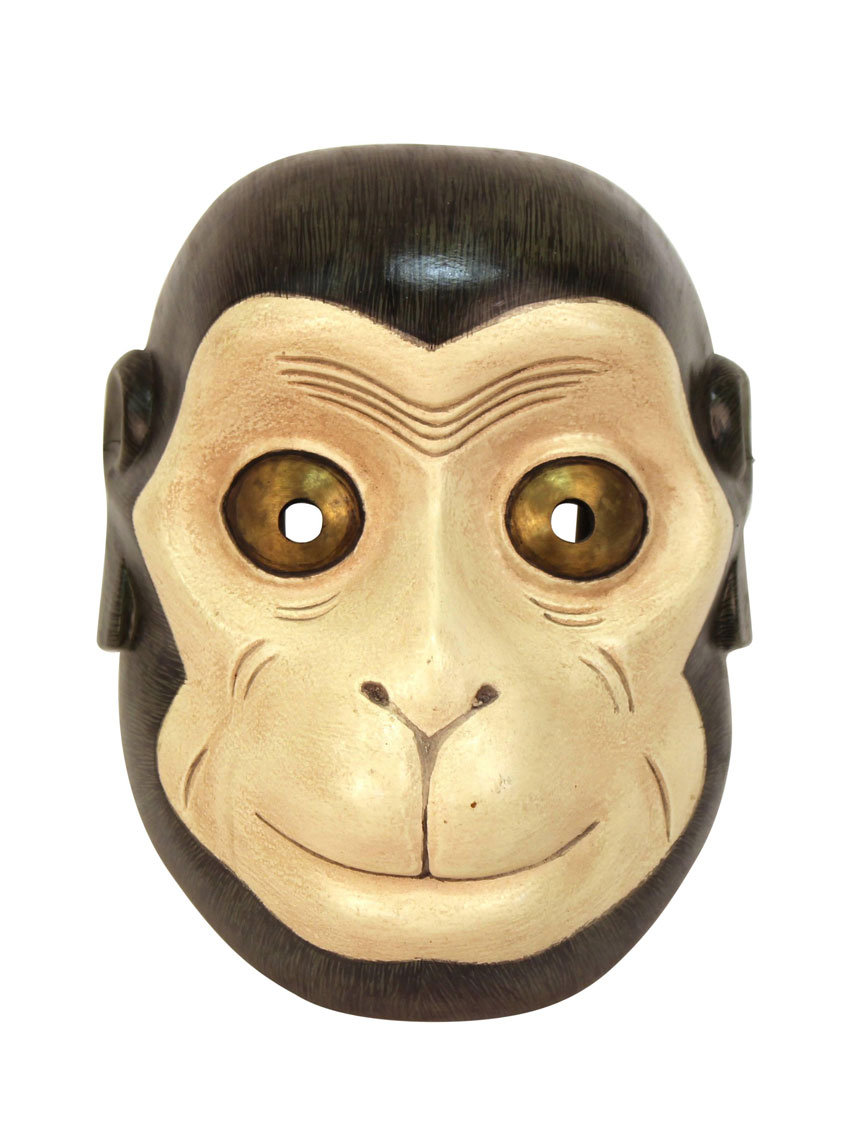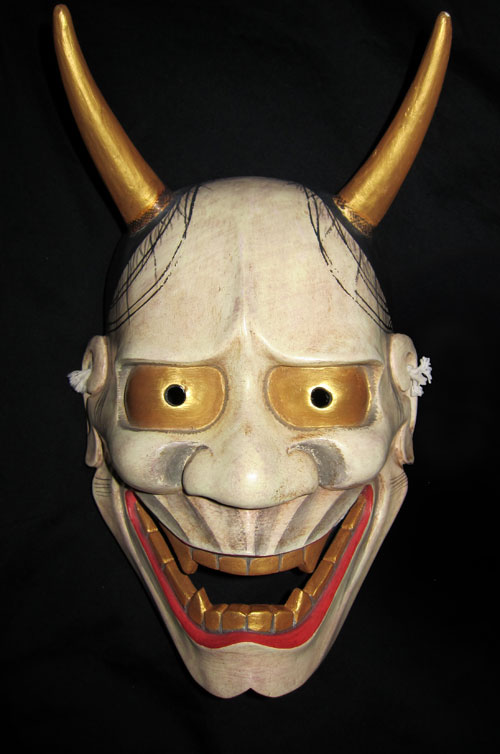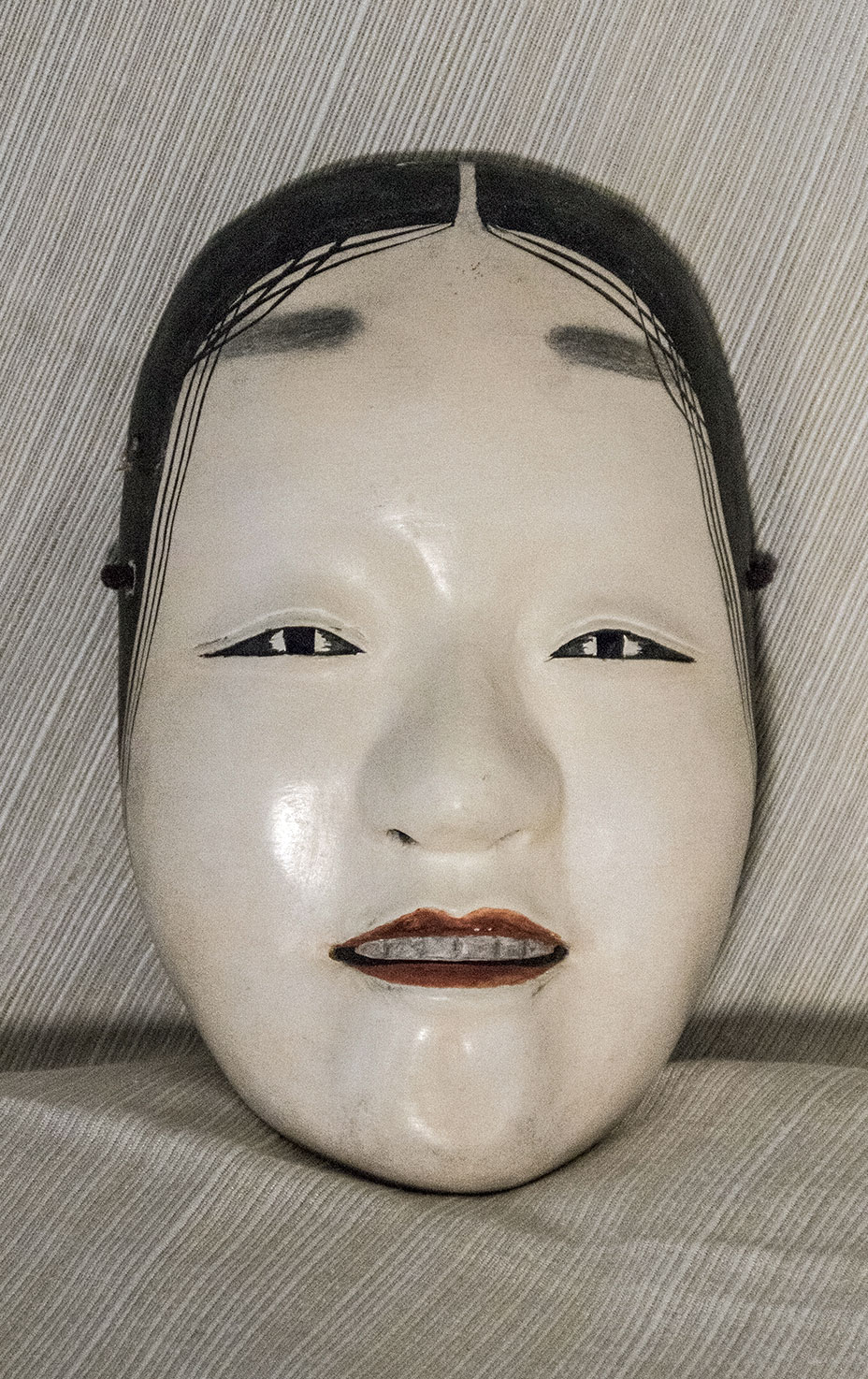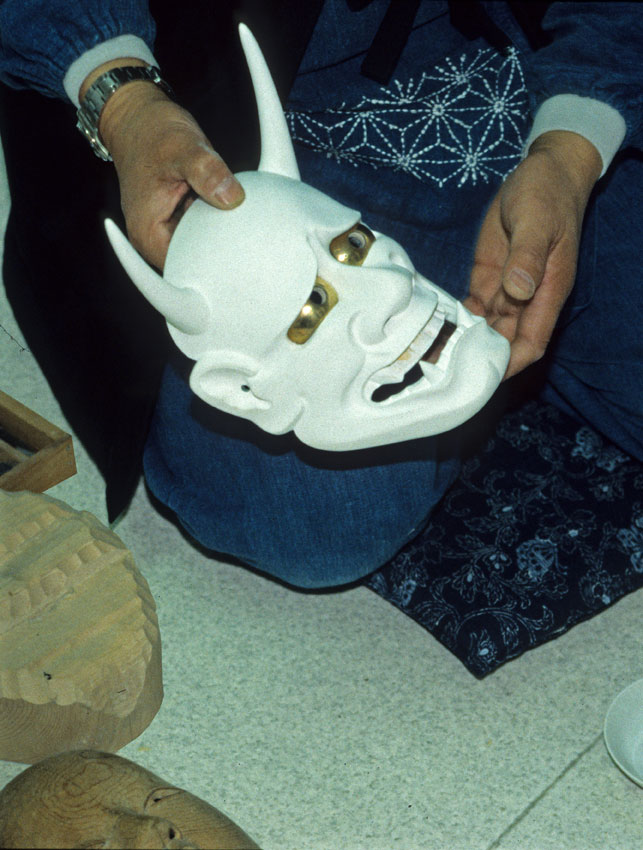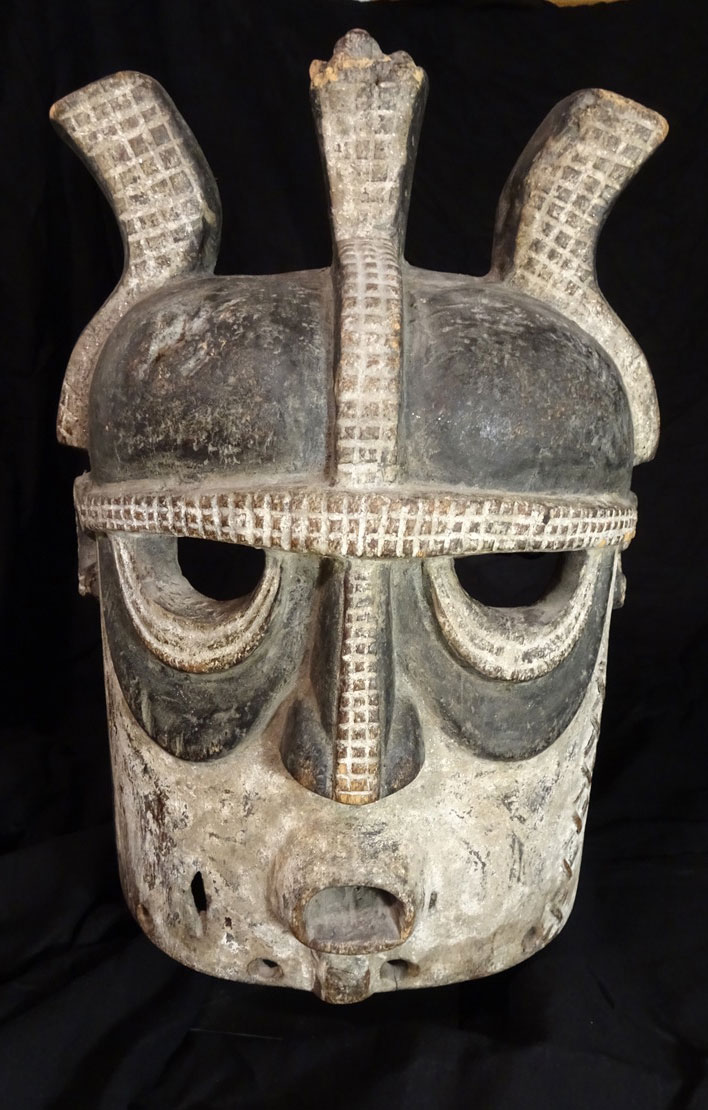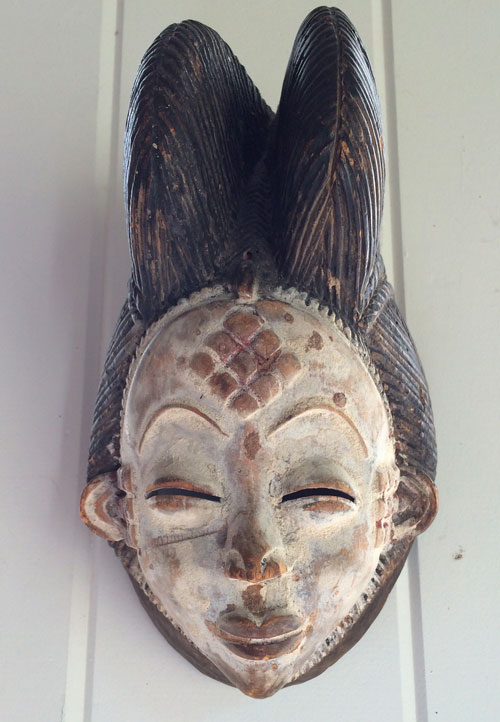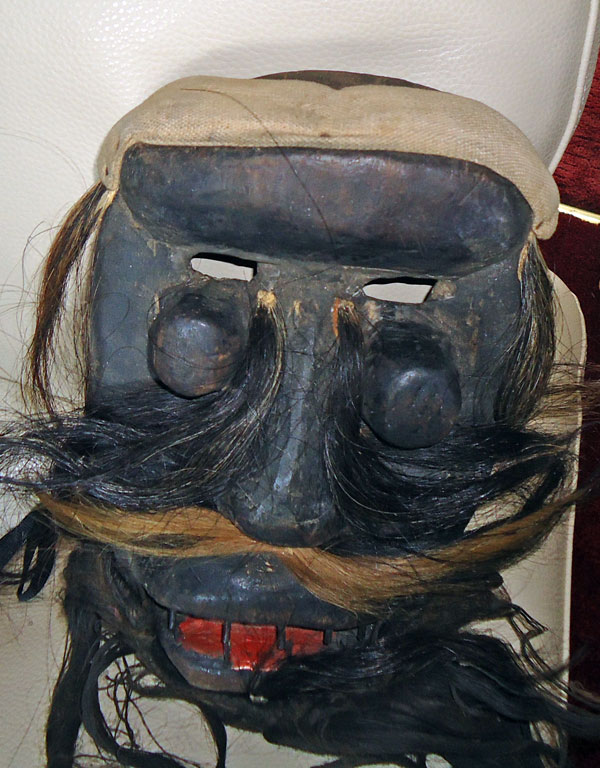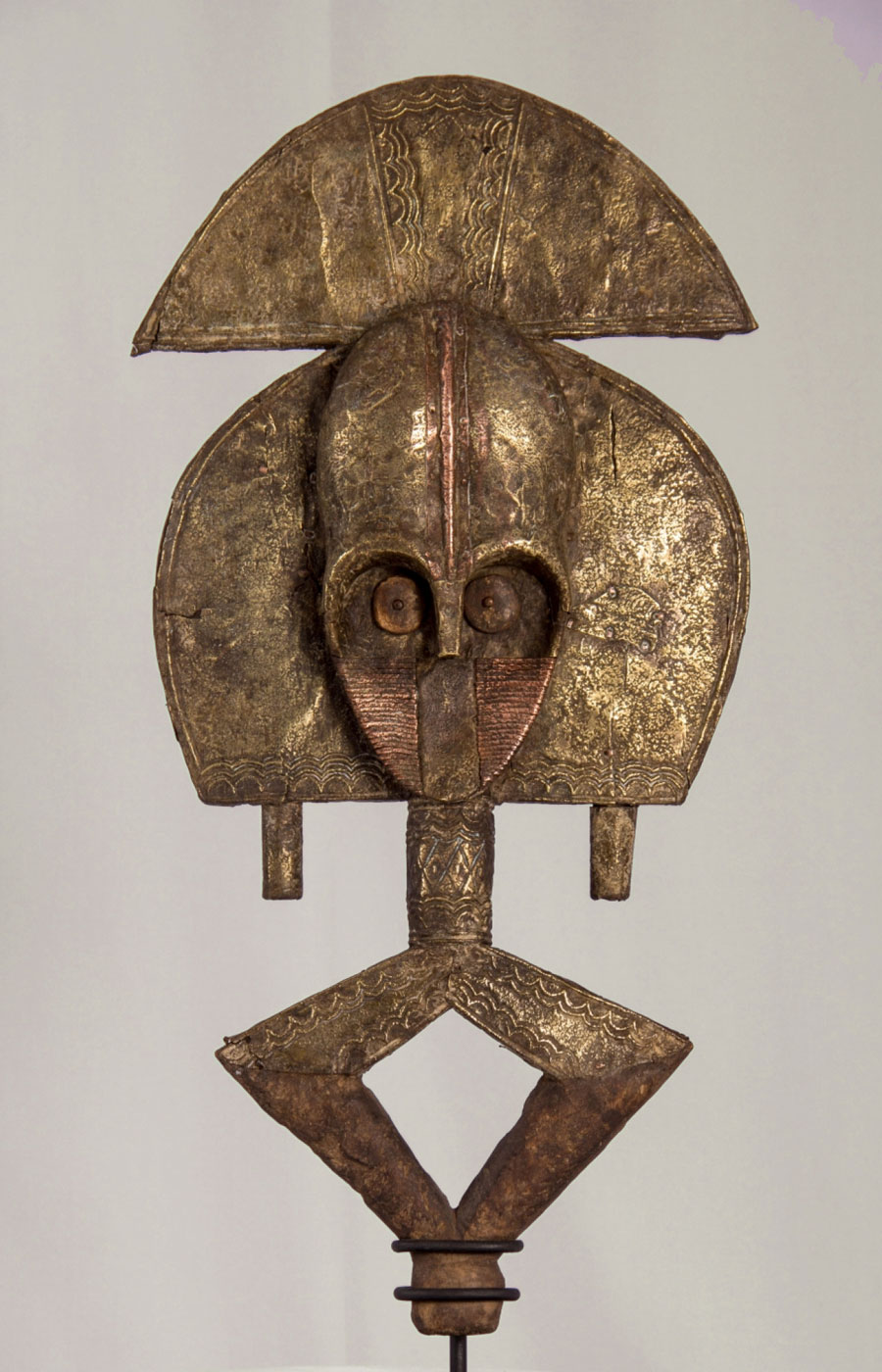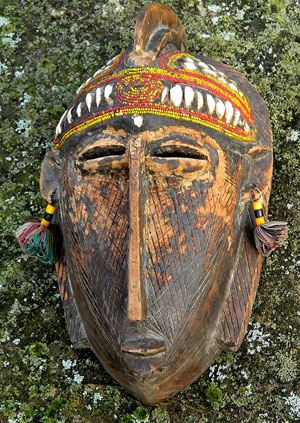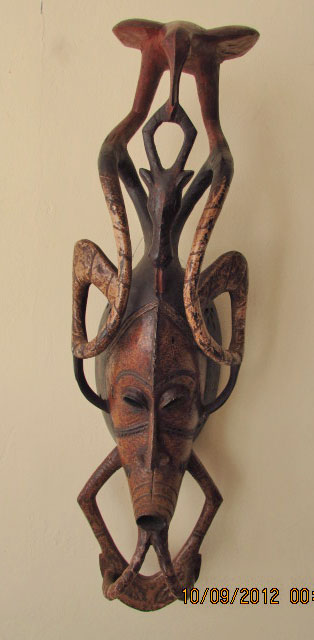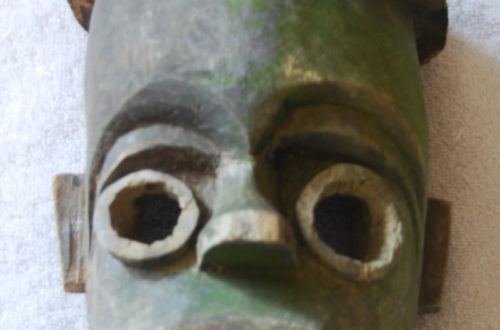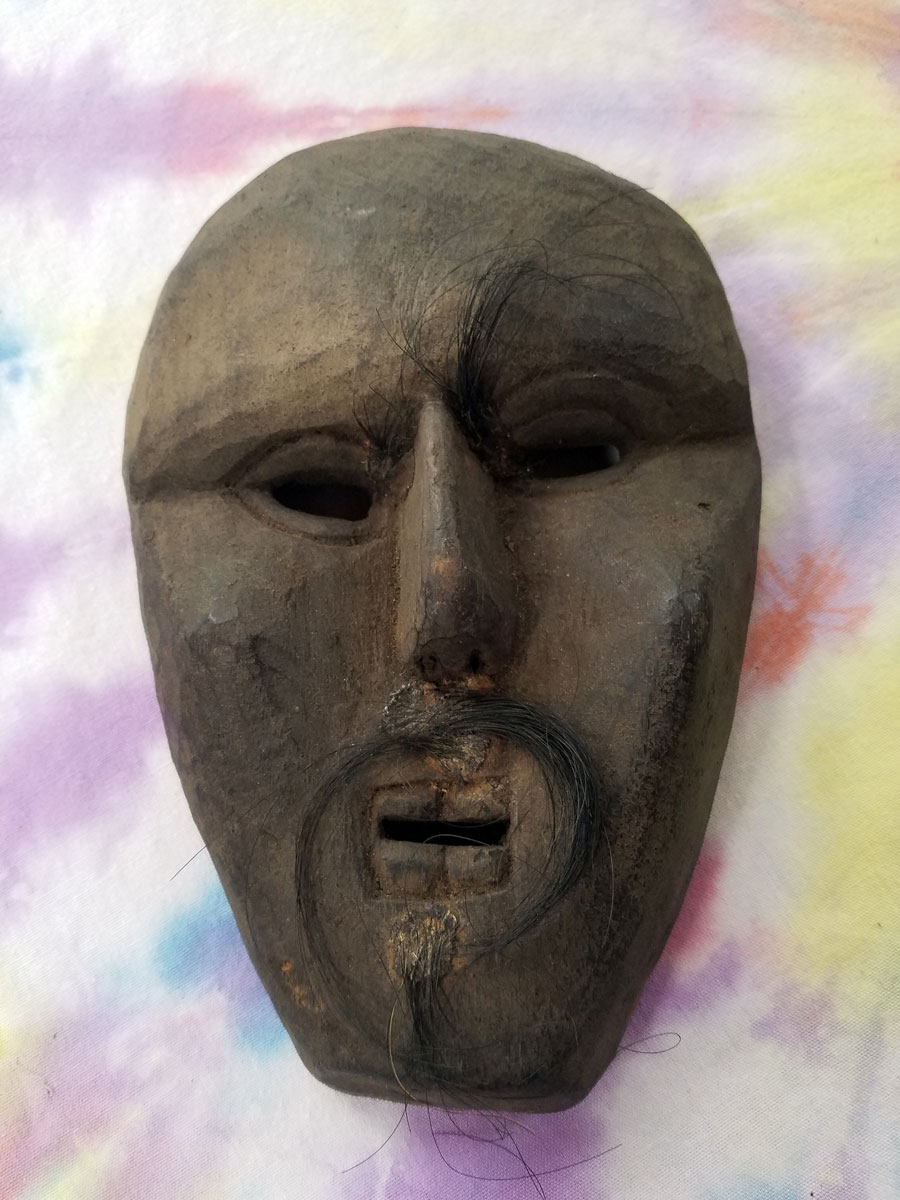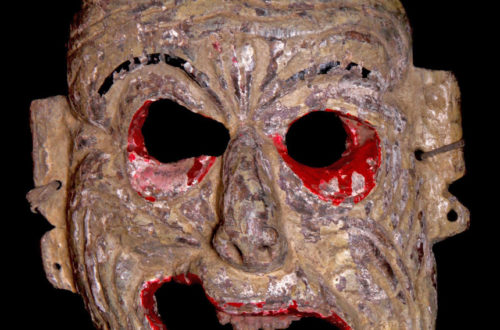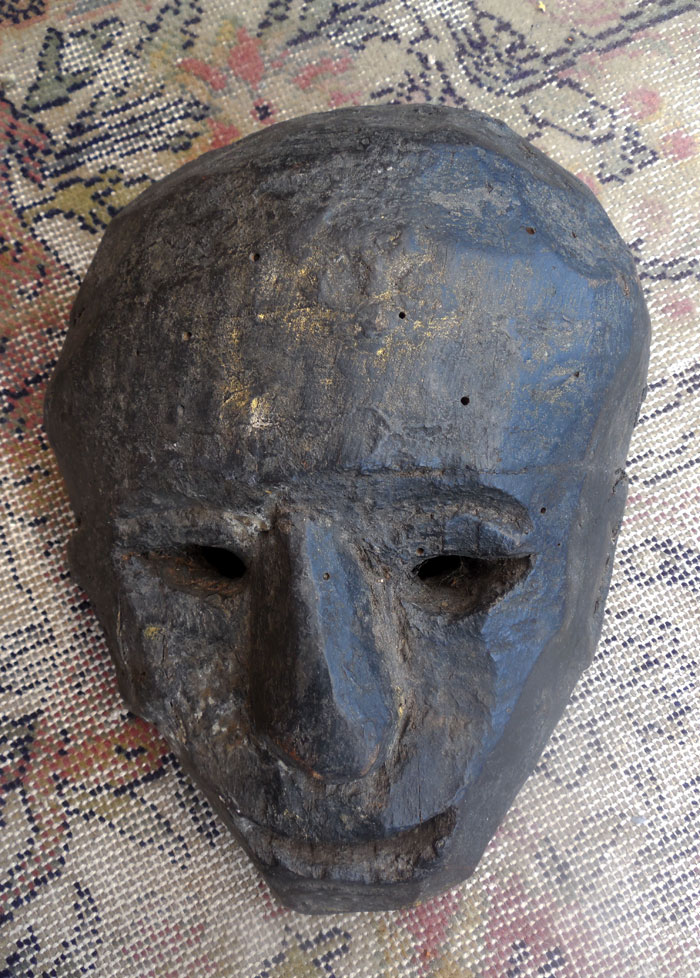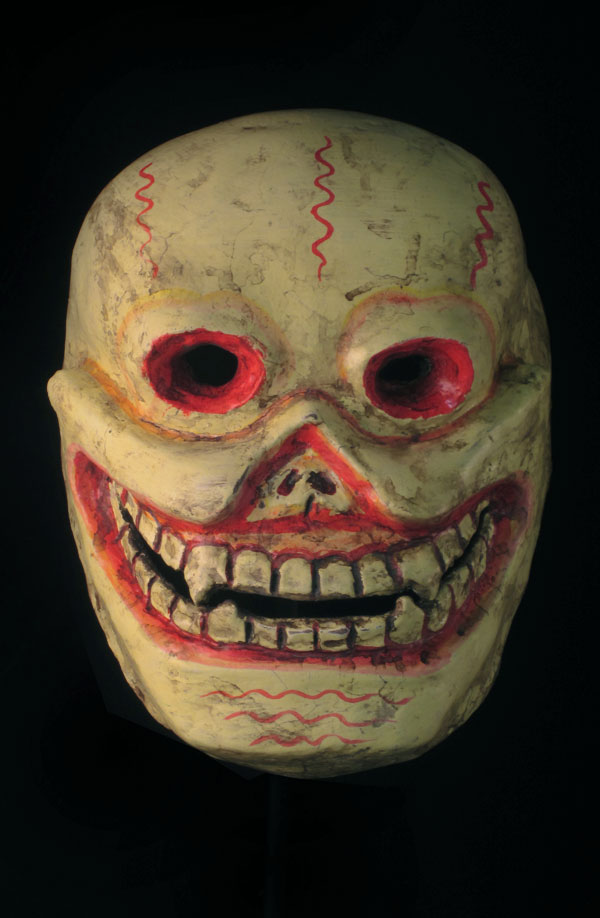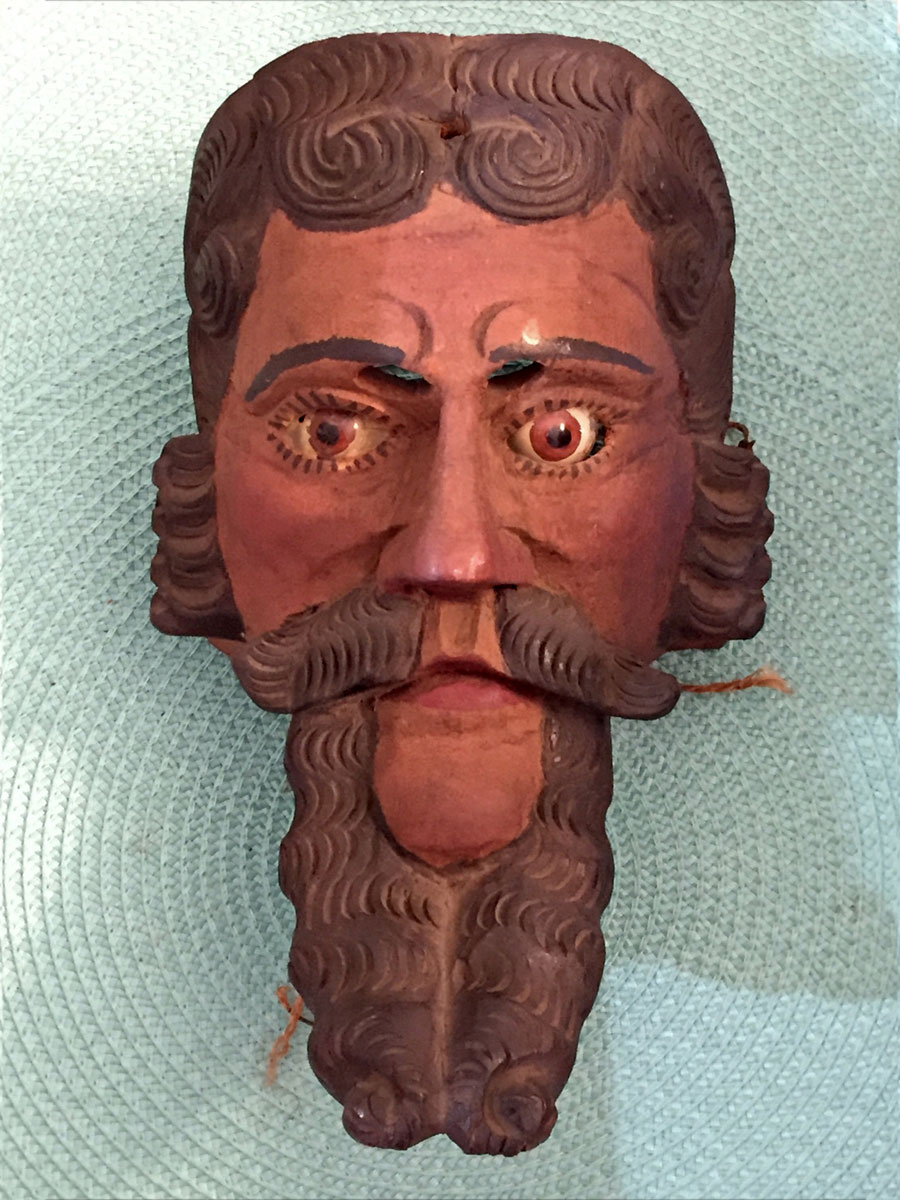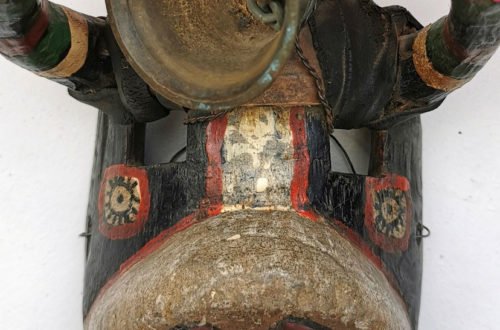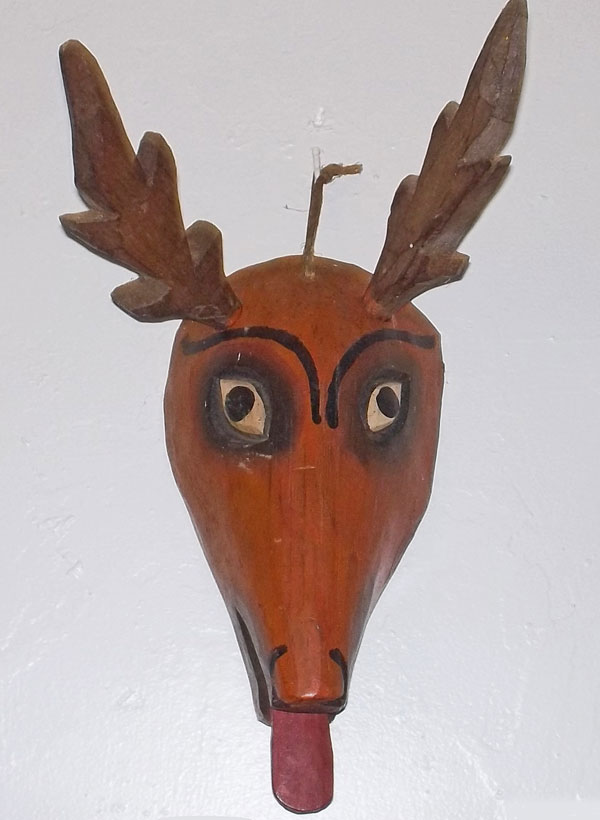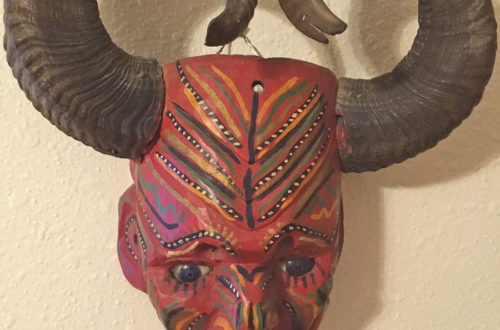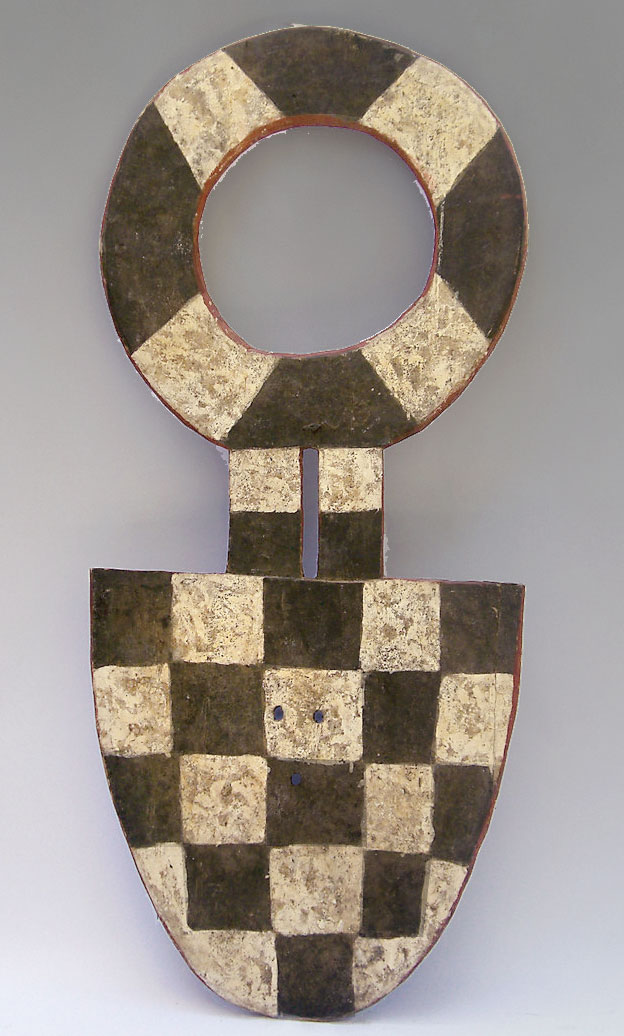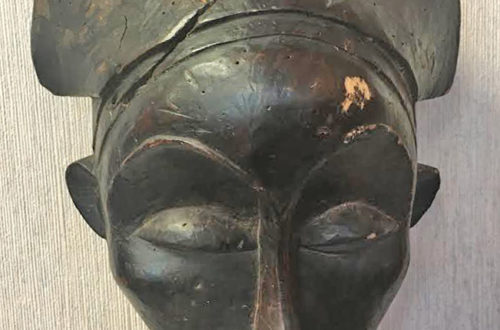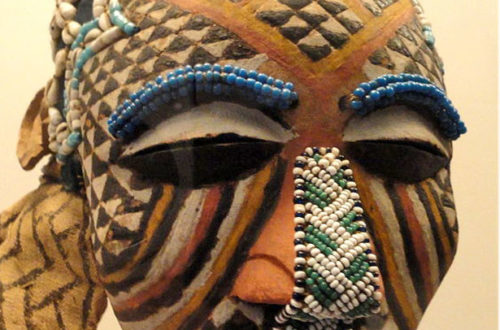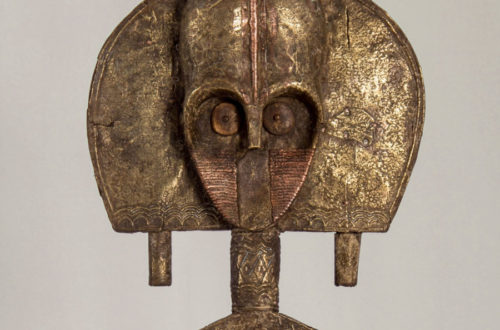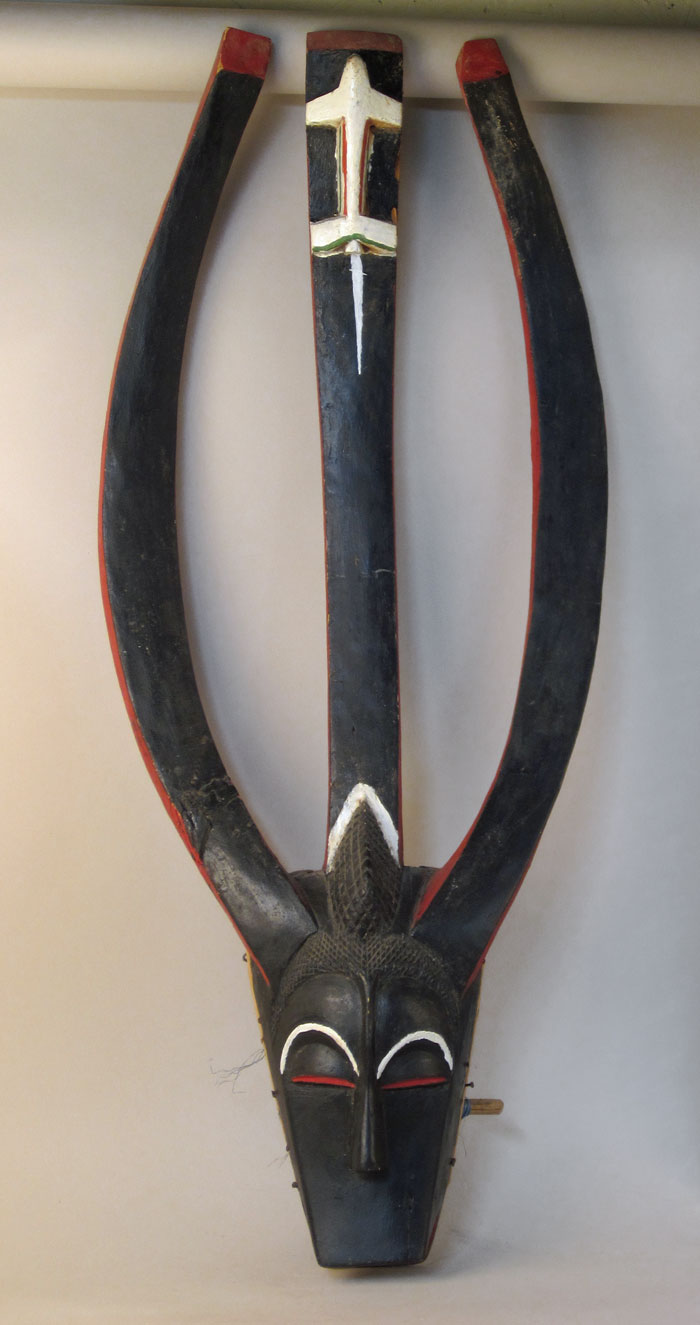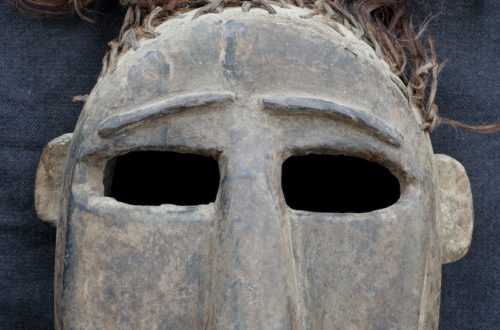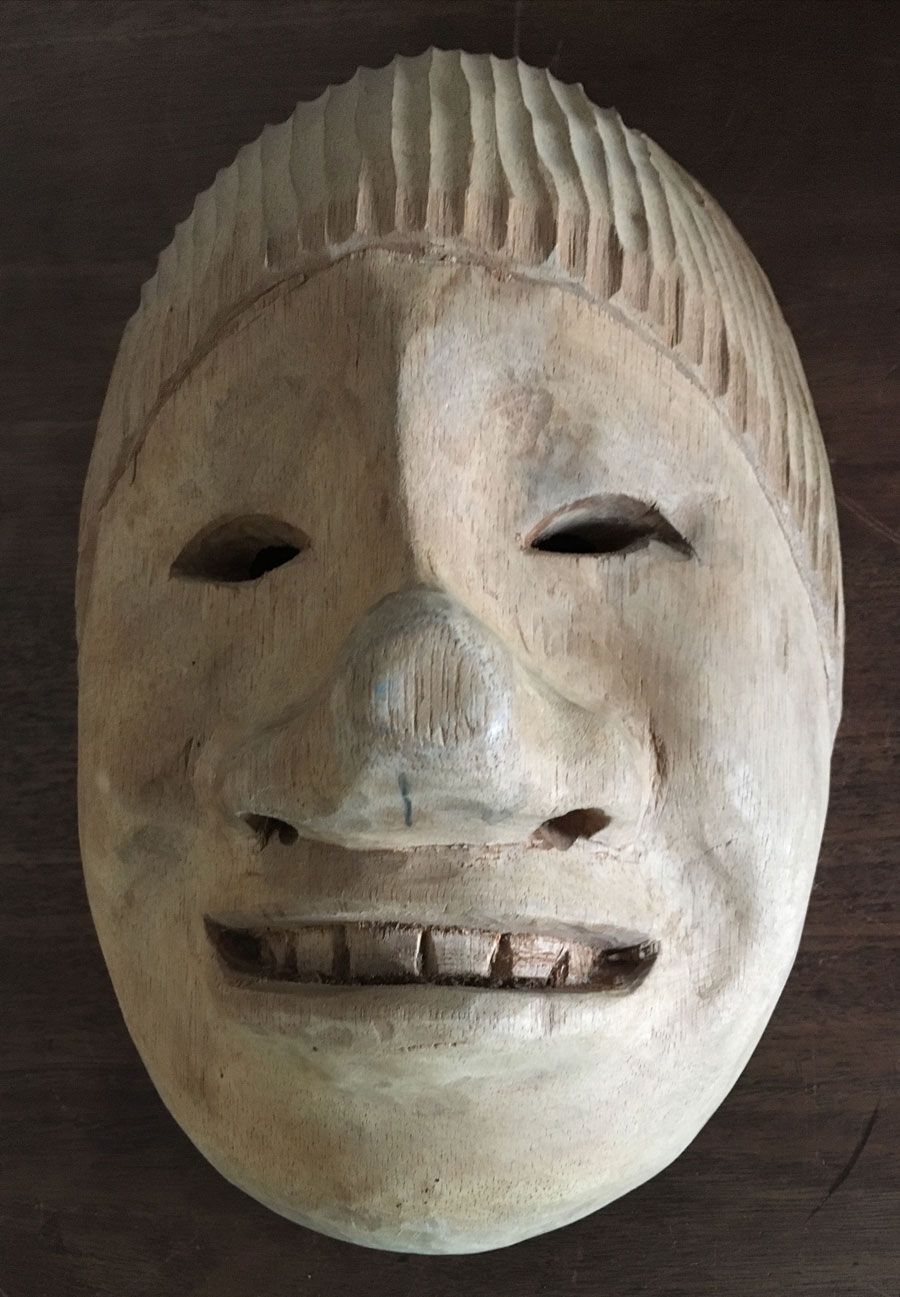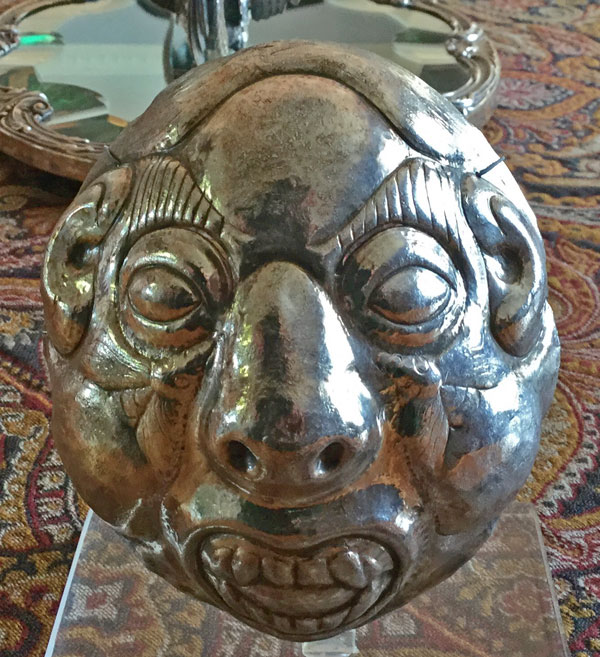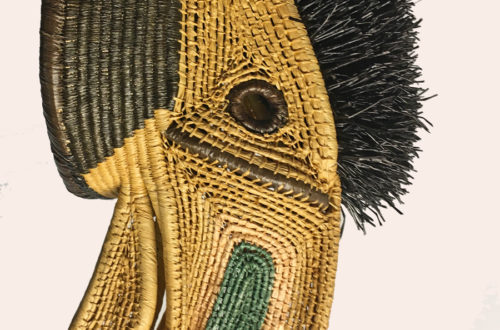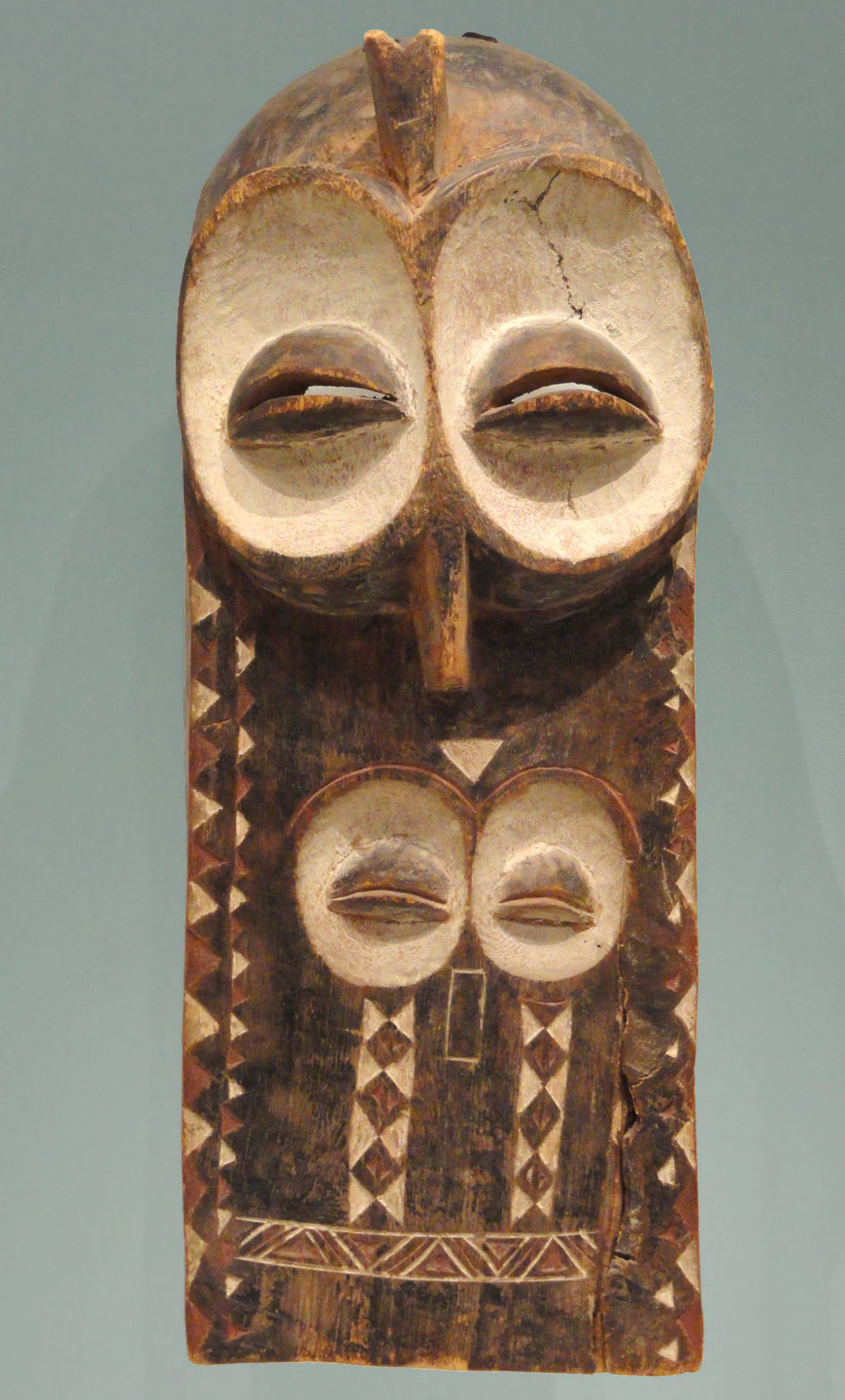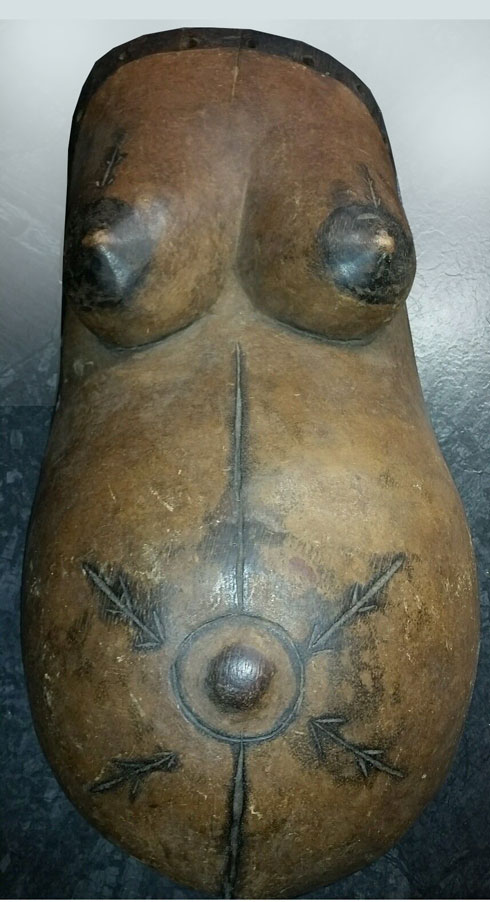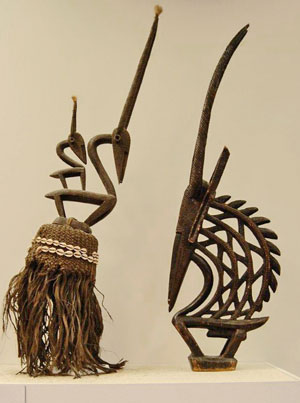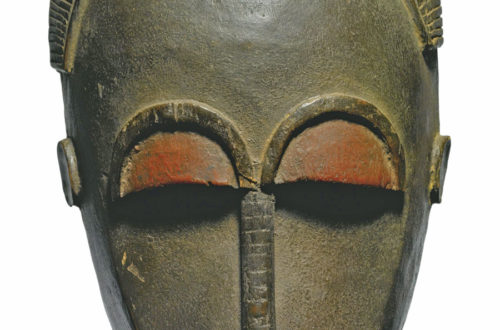This famous monkey mask, often called Saru from the Noh theater, was made during the Showa period between 1926-1989. Even though it looks brand new, it’s probably 50 years old. The following maybe more than you want to know… A collective name for Noh and kyōgen used until the start of the Meiji era. Sarugaku derives from sangaku, which came to Japan from the Tang Dynasty during the Nara era and was combined with ancient Japanese comedies. Sarugaku flourished during the Heian and Kamakura eras, and was at the time strongly comedic and broad based, including skits, acrobatics and magic. In the middle of the Kamakura era Sarugaku split into…
-
-
Rare Bindji mask from DRC
Q: This mask does have some history. Me and my father worked in the Democratic Republic of Congo. While there we purchased a few masks, some of which are tourist pieces, but every now and then we got a good one. This one was given to us as a farewell present when we left. But I have no info about where it is from and if or not it is old. Judging by the wood it dose have some age to it. It also seams to have been repaired at some point. The repair is one of my favorite features of it. Here are some pictures. Please let me know…
-
Kota reliquaries are often in mask collections
That is because they’re so beautiful. This abstract sculpture would have stunned the great European artists of the 19th century. The Kota live in villages comprising two or more clans. Clans in turn comprise several lineages or family groups that trace their descent from a common lineage ancestor. This is an important point related to their art, for like the Fang, the Kota revere the relics of ancestors. Ancestor worship formed the core of the family group’s religious and social life. At the death of a chief, the initiates would take from the body of the deceased various relics, which were then decorated with metal and rubbed with powders of…
-
Fake shaman’s mask from Nepal
Q: Is this mask from Nepal or possibly PNW? Jim, 1529 A: Lately I’ve done some blogs on the authenticity of ethnographic masks. It has been an issue with African tribal art for well over 100 years. By now the problem has spread to all parts of the world that welcome tourists looking for souvenirs. Nepal is no exception. What you see here looks like a shaman’s mask from the Middle Hills region of the Himalayans that even has a red wax seal of the Nepalese customs service on the back. Then please go to our records and look at “Masks of the Himalayas” dated March 16, 2018, and “Himalayan…
-
The famous Pedro Alvarado
Q: Mask is 11″ tall, 6.5 ” wide, 5″ deep. It appears that it may be a mask of Spanish General Pedro Alvarado. My father, who was an Army Chaplain in WW2 stationed in Panama Canal Zone, obtained it on his circuit travels to Guatemala. It has been in storage for decades and is in excellent condition. It has the initials “D.M.J(or I).C” written inside (visible in rear photo). I have a closeup photo of the initials but you only allow 3 to be sent. A: I urge people to send in a front, side and rear view of their Mystery Mask. A forth shot of an important detail is…
-
Big Bedu plank mask
The Bedu mask is one of the largest masks in Africa and is from the Bondoukou region of Ivory Coast. They are usually from 4 to 8 feet tall and can weigh almost 100 pounds. The mask is generally danced once a year at New Year festivities, but can also appear a harvest festivals and funerals. Only strong young men can manage these performances. This one is about 5 feet tall. Note how small the eye holes look on the middle of the shield. The black and white pattern would be quite an attention-getter when it was new. These unique plank masks make strong abstract statements and have been compared…
-
Perfect reproduction of Tsogo mask
Q: Since you were talking about African masks, I would like to show you this one I bought from a collector some years ago. He sold me it as Tsogo, but I’m not sure if it’s Tosgo or Igbo. Previously I thought it was original but now, as I’ve been attending your site, I’m not that sure. Could you help me please? Monica, 1526 A: Your mask almost looks like an authentic Tsogo. The carver must be very skillful and well trained to make a reproduction that looks so old and used. This is what one of the best tribal art dealers (Hamill) has to say about a similar mask…
-
Chhau mask from Purulia, India
The Chhau dance is a semi classical Indian dance with martial, tribal and folk traditions, with origins in the Purulia district in West Bengal. The dance ranges from celebrating martial arts, acrobatics and athletics performed in festive themes of a folk dance, to a structured dance with religious themes. The stories enacted by Chhau dancers include those from the Hindu epics such as the Ramayana and the Mahabharata. Purulia Chhau Dance is listed on UNESCO’s world heritage list of dances. Traditionally, the chhau dance held in the mid march when one agricultural circle end and a new circle begins. Purulia chhau dancer were the earthy and theatrical mask which represent…
-
South American Indian mask
Q: Appreciate any idea of value and tribe that hand-carved this mask. I believe it is from southern Colombia. I was told several years ago they were done by a rare tribe near the Amazon region but I don’t know if that’s true. Sally, 1524 A: I have seen very few of these masks. Back on March 31, 2017, I posted #1138, which is quite similar to Sally’s. It was my understanding that these unpainted carved-wooden mask probably came from a tribe below the southern border of the Amazon such as the Chaco, Guarani or other small cultures close to Northern Argentina. I wonder if they are painted for actual…
-
Authentic Bembe mask from DRC
The previous blog features a fake that could be mistaken for a real Bembe masks. Take a good look. You can greatly enlarge both scans to study the detail. Collecting African masks can be a challenge! This authentic mask came from the Cleveland Museum of Art and would cost many thousands of dollars. The previous mask cost ten dollars. Perhaps a good compromise would be a well made reproduction. The Bembe originate from the northwest forests of Democratic Republic of the Congo. They are representative of numerous ethnic traditions including Lega, pre-Lega, Boyo-Kunda, and Bemba. They are a tough and proud people who absorbed other populations and their systems of…
